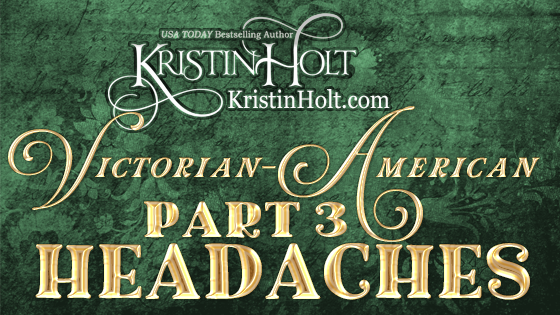
by Kristin Holt | Sep 12, 2019 | Articles
Victorian-American Headaches: Part 3 continues the 11-part series, adding to two other doctors’ perspectives, opinions, and attitudes about headaches. This 1893 newspaper article explains types of headaches, and the doctor’s urging to mothers and nurses to protect babies’ eyes. He not only mentions headache “specifics”, but he sheds much light on antipyrin, a development that made a big splash in the waters of headache management, circa 1888. Scientists developed the precursors to acetaminophen, aspirin, etc., and use of their remedies exploded. The good doctor explains the urgency of patients in obeying their doctor’s instructions and “taking their prescriptions.”

by Kristin Holt | May 18, 2017 | Articles
An unnamed Dress Reformer, utterly against “tight lacing” (corsets), uses the art of poetry to explain that everything that ills a woman–from her attitude to her nature, from length of life to a red-tipped nose–is all a result of the ill-fated habit of tightly cinched corsets. This vintage newspaper publication is an example of the American Victorian’s use of humor to blame fashion on craziness with a price too steep to pay.

by Kristin Holt | May 13, 2017 | Articles
Despite the voice of reason from scientists of the day, medical doctors, dress reformers, nineteenth century women continued to cling to advertisements claiming health depended upon corsets and laced tightly to achieve the beautiful figure they desired. Advertisements didn’t promote mere beauty–they went so far as to claim health. A newspaper article published in Chicago Daily Tribune of Chicago, Illinois, on April 24, 1897 spoke of Roentgen’s Light–X-rays–and the malformation caused by lacing. Today, the argument seems sound, prudent, and almost laughable that anyone fell for corsets.

by Kristin Holt | May 7, 2017 | Articles
Dr. Richardson, a London physician, spoke against corsets (tight lacing) and the damage thereby inflicted upon women’s intellect. This article was syndicated from New York Times and appeared in Kansas Farmer on May 5, 1880.

by Kristin Holt | May 12, 2015 | Articles
Corsets are synonymous with the Victorian Era and well-dressed ladies. Corsets were worn by women… and men, adolescent girls, and even children. Maternity corsets existed as did nursing corsets. Unbelievable!













